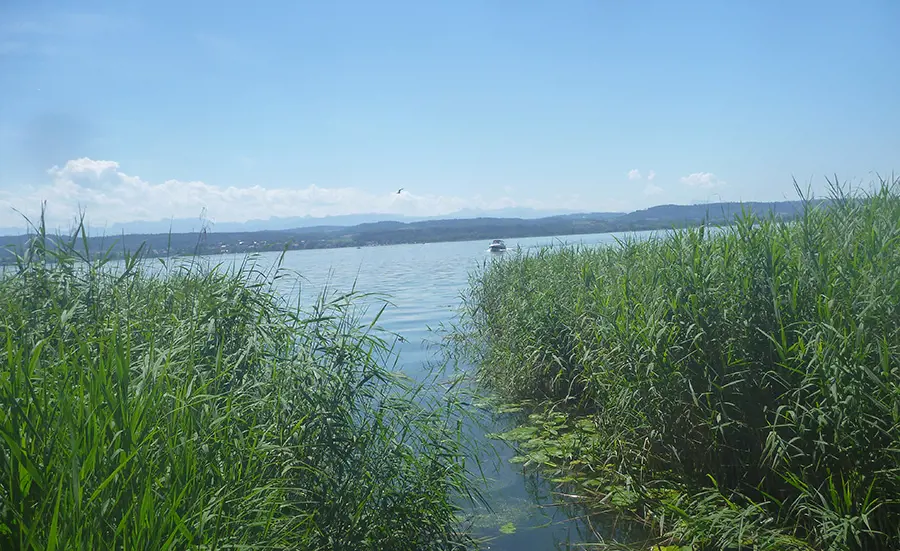
Assessment of the biological quality of Swiss lake sediments using oligochaete communities
Oligochaetes are abundant in sediments and include a large number of species ranging from sensitive to resistant to pollution. An index based on the in situ composition of oligochaete taxa was developed to assess the biological quality of lake sediments (Oligochaete Index of Lake Bioindication IOBL, % of sensitive oligochaete taxa) (AFNOR, 2016). In lakes, oligochaetes have so far mainly been used to assess the effect of eutrophication (and therefore the level of oxygenation of sediments) (e.g. Lods-Crozet & Chevalley, 2016), but they could also, in this ecosystem, provide information on the effects of toxic pollutants (e.g. metals, PCBs and PAHs).
As part of various mandates, we regularly assess the biological quality of lake sediments by studying oligochaete communities. We participate in the monitoring of the biological quality of Swiss lake sediments by the Service de Biologie des Eaux de la Direction générale de l’environnement du canton de Vaud and in the assessment of the biological status of Lake Geneva shoreline sediments before and after the installation of water intake and discharge pipes (e.g. as part of geothermal works).
Publications
AFNOR, 2016. Qualité de l'eau – Echantillonnage, traitement et analyse des Oligochètes dans les sédiments des eaux de surface continentales. Association française de normalisation (AFNOR), NF T 90-393 : 14 pp. + annexes
Lods-Crozet, B., Chevalley, P.-A. (2016) Evolution du zoobenthos profond du Léman, Rapp. Comm. int. prot. eaux Léman contre pollut., Campagne 2015, 132-141
